
Adolf Hitler and the Army of Mankind


Adolf Hitler and the Army of Mankind

Our fight, for the freedom of this tired, dusty world.
Our struggle, the races of planet Earth, wounded souls one and all, grasping one commonality: the aching desire to be free.
Adolf Hitler united the races of our little world, he taught us to be strong, even in the face of unbeatable odds. He gave us back what we desperately needed -- our pride. Our pride in our nations, in our histories, our peoples and cultures. That every race had something to give. Something real to believe in.
Gone were the days of European brother killing brother. For the first time the sons and daughters of Europe were united. Men and women, from the hot plains of Africa, to the snow-capped mountains of distant Russia, saw for the first time a glimpse of true freedom. A freedom their ancestors only dreamed of. And they clung to it even as hope faded away before their tired eyes. Human beings from all over this planet, dozens of nations, gave their very lives for that chance. But it was not in vain. Their sacrifice is rising like a burning star. A phoenix from the ashes of WWII. Their stories, their truth -- our truth, known at last. The smoke is finally beginning to clear and nothing can stop us now.
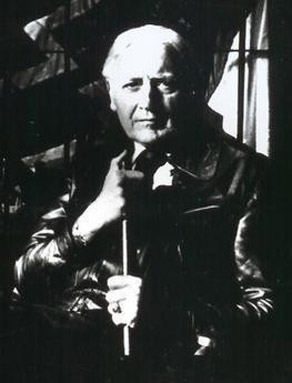
'The earth is alive, and it feels with you. It follows your footsteps, your search, with equal anxiousness, because it will be transfigured in your triumph.
'Nothing is stronger than an idea whose time has come.'
'...Misfortune must not make us cowardly, but rather resistant, never giving a mocking watching world the appearance of wavering.
Below is a poem by American underground poet Charles Bukowski (August 16, 1920 – March 9, 1994) that reminds me of our fight.
Victory
What bargains we have made
[Above: State of Burma Independence Ceremony, 1943.]
[Above: This war time art shows the British colonial beast ravishing the people of Burma.]
On April 1, 1937 Burma became a separately administered colony of Great Britain. But all of this was about to change. A Burmese patriot named Ba Maw served as the first Prime Minister and Premier of Burma through February 1939, having first been elected to the Legislative Assembly as a member of 'The Poor Man's Party'. Ba Maw was an outspoken advocate for self-rule and he opposed Great Britain's involvement in WWII, because that would mean Burmese involvement also. He resigned his position on the Legislative Assembly and was then arrested for sedition on August 6, 1940. Ba Maw spent more than a year in prison as a political prisoner until he was freed by the Japanese when they quickly overran Burma in December of 1941 and occupied it in 1942.
[Above: Ba Maw (February 8, 1893 – May 29, 1977) was the first Prime Minister and Premier of Burma and an ally to Imperial Japan.
[Above: Ba Maw was not a fan of flashy medals. He would often say that those who flashed fancy medals usually didn't deserve them.
[Above: Ba Maw.]
[Above: Group photo of some of the Thirty Comrades.]
[Above: The first Burmese delegation to Japan before their audience with the Emperor. Left to right Prime Minister Dr. Ba Maw, Minister of Home Affairs Thakin Mya and Minister of Justice and Finance Dr. Thein Maung, Tokyo, March 1943.]
[Above: This Burmese postcard shows soldiers and civilians united.]
[Above: Suzuki Keiji.]
[Above: A Japanese advisor teaching a Burmese soldier of the Burma Independence Army in the usage of the Arisaka rifle.]
[Above: Burmese volunteers on the march.]
[Above: Subhas Chandra Bose toasting with Ba Maw.]
[Above: Very rare Burmese document revenue used during the Japanese occupation.]
[Above: Union of Russian Youth march in Minsk (Belarus) on June 22, 1944.]
To further witness this historic occasion were many local youths, including Russian youth representatives from Serbia and from Russian General Vlasov, along with military units and ROA administration representatives. During this meeting Captain Lazarev was appointed Chief of Staff of the CPM. He had proven himself through faithful and skilled service in various Russian volunteer units.
[Above: Russian students of the SS take an oath at a ceremony in Torgau (northwestern Saxony, Germany), July 26, 1944.]
[Above: An armband of a Russian 'SS Pupil' air field assistant. It bears the national colors of Russia and the St. Andrew's Cross.]
In a speech Captain Lazarev declared:
'I have a Russian leader - General Vlasov,
The Union of Russian Youth was structured along the lines of the Hitler Youth. It was composed of youths from 10 to 20 years of age. It was divided into three age groups: children 10-14 years old, 15-18 year olds and 19-20 year olds.
There was also a women's section along these lines.
[Above: Poster urging Russian youth to join the ranks of the SS. It says: 'Think about your future! Become a Pupil of the SS'.]
This young youth movement was unfortunately cut short by the communist onslaught. Its leaders and a number of its personnel were evacuated to Germany in July 1944. Subsequently, the remaining members of the CPM joined the Luftwaffe 'Flakhelferinnen' and Army Group Center (Pupils of the SS).
[Above: Luftwaffe volunteers which assisted in anti-aircraft flak and other air defense efforts, otherwise known as 'Flakhelferinnen'.]
[Above: Recruiting poster from 1944. It has the same text as the above poster: 'Think about your future! Become a Pupil of the SS'. Is this taken from a real picture of Adolf Hitler and a Hitler Youth boy?]
[Above: Otto Kulessa (September 4, 1892 - ?).]
[Above: Otto Kulessa (front, center), in American Army captivity, with fellow forlorn souls.]
[Above: Flag of the Italian Social Republic (September 23, 1943 - April 25, 1945)]
[Above: Waffen-SS Italian shield patch. No photographic evidence has yet to surface of this patch being worn.]
[Above: Metal Italian Waffen-SS eagle insignia]
[Above: The Italian Waffen-SS wore red SS collar tabs in the beginning, but quickly earned the black versions in June 1944.]
[Above: This unique patch was worn on the left arm.]
[Above & below: Spectacular photos of Italian Waffen-SS honor flags during a ceremony. 'Onore' = honor.]
These brave and patriotic men, unwilling to participate in the King of Italy's betrayal of his country when he abandoned Italy's alliance with Germany, began as anti-partisan units. The communist influence was strong in Italy during the dark days of the end of the war and many Bolshevik terrorists and criminals roamed the countryside.
[Above: Italian Waffen-SS utilizing camouflage, November 25, 1944.]
[Above: Collar tabs of the Italian 29th Waffen-SS Grenadier Division.]
[Above: A great photo showing the arm eagle patch shown above.]
On September 7, 1944 the Italian volunteer force was renamed Waffen-Grenadier-Brigade der SS (Italienische Nr. 1) and placed under the command of Generalkommando Lombardia of Heeresgruppe C.
The valiant efforts of those first brave Italians inspired thousands of more men to volunteer. In December of 1944 the Italian Waffen-SS grew to over 15,000 men. The Italian volunteers of the Waffen-SS spent their final days fighting the huge communist movement which had erupted in Italy.
[Above: Waffen-SS Italian volunteers, note their distinct Italian helmets with 'Sig' runes.]
[Above: Italian Waffen-SS recruitment poster, circa 1943.]
[Above: Waffen-SS recruiting poster 'Enlist in the Italian SS legion'. This poster was released in 1943 and was done by Gino Boccasile.]
[Above: Waffen-SS recruiting poster. 'Honor - Fidelity - Courage'. This poster is also done by Gino Boccasile.]
[Above: Waffen-SS recruiting poster. 'For Honor - For Life'. This poster is also done by Gino Boccasile.]
[Above: Cover of scrapbook.]
[Above: This awesome sign was somewhere in Serbia.]
You have to wonder if the soldier who lived this scrapbook made it through. Did he ever see his beloved Germany again? Did he die in a flashing instant? Or was it slow, somewhere in the frozen wastes, fighting communism? Maybe he made it back and surrendered to the Americans or British? Was he with the millions of his comrades who also sought to surrender to them instead of the Russians, hoping for better treatment in captivity? How wrong they were. The Americans and British set up concentration camps where millions of Germans died from starvation, the elements or downright murder at the hands of cruel and sadistic American guards who liked to play 'target practice' on forlorn and starving human beings.
Regardless, it is lost forever in the dark dust of time. Whatever happened to the owner of this scrapbook I'd like to just say: 'Thank you'.
[Above: A flamethrower wielding soldier. Note his special flame-retardant clothing. It would definitely take a brave man to go into battle with a fuel tank strapped to his back!]
[Above: Three Serbian women in traditional dress.]
[Above: A Gypsy camp. Wow. The poverty and squalor is astonishing!]
[Above: Not from the album, but here's another Gypsy photo for you. I have no clue why the women are topless! Maybe it is a sort of World War Two Girls Gone Wild thing?]
[Above: Another bonus photo from the wild. This time it's another photo of a Gypsy woman, but with her top on this time.]
'Tzar Boris III, Bulgaria, God!'
[Above: Symbol of the Brannik youth organization. It uses Cyrillic script for the letter 'B'. The word 'Brannik' comes from verb 'branya' meaning guard, protect or defend.]
[Above: Brannik poster: 'With martial ardor and efforts - against all enemies of the Fatherland!']
[Above: Brannik group visiting Potsdam, Germany in 1941. Note the German Hitler Youth official in the center of the group.
[Above: Brannik poster: 'I protect her [Bulgaria] always and from everyone who hinders her uprise!' (There is also the word 'Brannik' on the sword).]
[Above: Brannik poster: 'The fiery youth of a New Europe united in holy unity will build the day of tomorrow'.]
[Above: Brannik youth members and others gather at an unknown location.]
[Above: A Brannik youth member in uniform (middle, front) with others.]
[Above: A female member of the Brannik organization salutes the Bulgarian Prime Minister Bogdan Filov.]
[Above: Brannik postal propaganda labels.
[Above: Brannik youth knife -- fashioned after the German Hitler Youth knife.]
[Above: The blade is engraved with the words 'Duty and Honor' -- similar to the German youth knife which says 'Blood and Honor'.]
[Above: Postcard featuring Brannik youth camp.]
[Above: The symbol of the Ratniks was fashioned after the Celtic Cross.]
Although they pledged their loyalty to the Monarchy and King Boris III of Bulgaria the King officially dissolved the organization in April 1939. This symbolic ban however was not enforced and they remained in existence. It would seem that powers behind the throne ordered the King to ban the Ratniks.
On September 20, 1939 the Ratniks marched in Sofia throwing stones at Jewish shops. An important leader of the Ratniks, Alexander Belev, claimed responsibility for planning the rock-throwing protests.
Many of the Ratniks were forced to leave Bulgaria with the coming of the communist hordes on September 9, 1944. Many of the leaders became members of the Bulgarian national government abroad, while younger members of the Ratniks volunteered to fight on and joined the German Wehrmacht, still others stayed in Bulgaria and went underground, continuing the fight against communism.
[Above: Hugo Boss.]
In the financially turbulent year of 1924, Hugo Boss founded his clothing company in Metzingen, a small town south of Stuttgart. But due to the inflationary crisis in Germany at the time he was forced into bankruptcy. In 1931, he began again, with only six sewing machines to his name, all that was left to him after the financial jackals nearly destroyed his company and his country alike. But like Adolf Hitler and the National Socialist party Hugo Boss was as a phoenix and his star was about to rise.
In that same year Boss joined his countrymen and became a member of the National Socialist party and a sponsoring member of the Schutzstaffel (SS). In the following years his zest for his country and beliefs grew and he joined the German Labor Front in 1936, the Reich Air Protection Association in 1939, and the National Socialist People's Welfare organization in 1941.
An advertisement for Hugo Boss stated that he began producing uniforms for the National Socialist party in 1924. As time went on he became an officially licensed supplier of uniforms to the SA (Sturmabteilung), SS (Schutzstaffel), HJ (Hitler Youth), NSKK (National Socialist Motor Corps), plus a handful of other party organizations.
[Above: An advertisement for uniforms made by Hugo Boss. Hugo Boss produced uniforms for many factions of the National Socialist state, including, as advertised here, Hitler Youth, SS and SA uniforms.]
Not many people know the HUGO BOSS brand's origins and I'm sure the company would rather have the world forget them. But history remains and the fact that Hugo Boss was a fervent 'Nazi' is well-known to historians. In fact, according to German historian Henning Kober, the company managers were zealous National Socialists who immensely admired Adolf Hitler. Also according to Kober, Hugo Boss had a photograph in his apartment of himself with Hitler, taken at Hitler's Obersalzberg retreat in 1945.
The Judeo-Allies punished Boss for his National Socialist party membership and his financial support of the SS. They even punished him for making uniforms for his country! He was considered both an 'activist' and a 'supporter and beneficiary of National Socialism'.
In 1946 vengeance was laid out to Hugo Boss. He was 'legally' stripped of his voting rights, his capacity to run a business, and fined a huge penalty of 100,000 DM. He died in 1948, but his business survived, carried on by his son-in-law.
[Above: A modern advertisement for high-end Hugo Boss suits.]
[Above: Hugo Boss cologne.]
[Above: Hugo Boss clothing tag.]
In January-February 1943, the regiment took part in defensive battles on the Seversky Donets, then tactically retreated to the Ukraine. In March 1943, the soldiers of the regiment were included in the 1st Cossack Cavalry Division von Pannwitz.
[Above: The unique and wondrous flag of the 1st Sinegorsk Cossack Ataman Regiment.]
The banner itself was blue with a picturesque center with two braids, sheathed in gold fringe around the edges. On the front side, in red, was embroidered with the icon of the Archangel Michael on a white horse, with a golden trumpet and spearing a dragon. In the upper left and right corners of the flag were golden Russian double-headed eagles, each holding in its talons a swastika of National Socialism. Between the eagles, in gold, was inscribed: 'The 1st Sinegorsk Cossack Ataman Regiment.'
Under the eagle near the flagpole was another inscription, also in gold, compromising eight lines:
The reverse side of the flag is identical, but instead of the icon of the Archangel Michael, there is instead the icon of St. Demetrius on a white horse, also spearing a dragon. The blue-yellow-red colors of the flag match the traditional range of colors of the Don region.
[Above: The men of the 1st Sinegorsk Cossack Ataman Regiment.]
Much like the holy German Blood Flag, which is also 'lost' to history, the flag of the brave men of the 1st Sinegorsk Cossack Ataman Regiment is perhaps being treasured privately, somewhere in the great expanse of Russia, waiting to fly free once again.
[Above: The men of the 1st Sinegorsk Cossack Ataman Regiment.]
[Above: The 1st Sinegorsk Cossack Ataman Regiment on the cover of the Russian version of Signal magazine.]
[Above: Unit insignia of the African Phalanx. This badge was worn on the right side of the jacket. The double-bladed battle axe was the symbol of Vichy France.]
France was embroiled in a nationwide argument on what to do in Africa. The great Jacques Doriot (founder of Parti Populaire Français and LVF veteran) called for the formation of a Legion to be sent to Africa. Eventually several meetings were organized in Paris toward the establishment of the African Phalanx (Phalange Africaine). This force would be charged with the duties of defending French territory and North African populations.
[Above: The North African Brigade, Paris.]
There are no known official figures of the French force and numbers vary by author, but it is safe to say there were 400-450 men, about 2/3 French and 1/3 Algerian (330 French volunteers were recruited and instructed in the Bordj-Ceda camp).
[Above: Captain Pierre-Simon-Ange Cristofini, a Corsican veteran of the French colonial infantry, was chosen to command the African Phalanx. He was promoted to Lt. Colonel and immediately flew to Tunis and began a recruitment drive. The end of the war saw him retired to his native Corsica, where the Allies arrested him and murdered him for 'treason'.]
The Germans assisted in the training of the African Phalanx, from anti-tank techniques to intelligence. On March 18, 1943 this rather mysterious unit was sworn in.
The unit was largely equipped with French equipment, but the Germans contributed many rifles, a handful of machine guns, thousands of grenades, etc..
The African Phalanx wore French uniforms with German helmets and boots. Their helmets were painted on the right side with a red, white and blue tri-color flag, while on the helmet's left side was a shield and axe, white on black with a white border background. These markings were carefully hand-drawn using the dimensions of German helmet decals.
[Above: Men of the African Phalanx.]
[Above: Captain Dupuis. Here you can see the African Phalanx double-bladed axe patch on his right pocket.]
[Above: An earlier photo of Captain Dupuis. The battalion number is seen below an inverted chevron on his collar.]
[Above: Captain Dupuis being awarded The Legion of Honor medal in Tunisia. This medal is the highest French order of merit, established in 1802 by Napoléon Bonaparte.]
Friday, on the night of April 16, the African Phalanx sent out a patrol of eight men and two sub officers. They ventured 4-5 km east of Bab-el-Medjez and surprised a British (New Zealand or Hindus troops) reconnaissance group. A violent clash ensued. A German battle group arrived just in time and repelled the British forces. Seven of the French group died and the remaining three were wounded. French Staff Sergeant Picot was found decapitated! Despite this horrid act the Germans collected the British forces that laid wounded on the battlefield.
The next day a patrol was sent out to retrieve the body of Sergeant Picot. It was never found.
[Above: The men of the African Phalanx and their German comrades. The vehicle is a Steyr 1500a.]
The survivors kept their composure and remembered their training, however. They resisted the British offensive and made an orderly retreat.
Later that April, the remnants of the unit were renamed once more to 'Légion des Volontaires Française de Tunisie (Legion of French Volunteers of Tunisia)'.
[Above: A German soldier with three indigenous volunteers of the African Phalanx.]
[Above: Member of the African Phalanx.]
The Allies were vengeful to their prisoners, and of the unfortunate men who were captured, numerous were executed and even more were condemned to long jail sentences -- a fate often worse than death. The victorious Allies hunted these men like animals, offering rewards even. Most of the men who fled to Carthage and to the promised protection of Bishop Gounot were eventually captured. It is said that the Allies murdered many of the indigenous volunteers of African Phalanx. There are stories of some men who eluded capture, wandering from place to place, eventually finding refuge in Spanish Morocco.
[Above: A captive Tunisian volunteer from African Phalanx, captured by British forces somewhere in Tunisia. Here is a great glimpse into the helmet insignia bearing the French flag. His face bears the look of a man who has seen far too much and doesn't care anymore...]
Decorations:
Seven soldiers, NCOs and officers were awarded the German Iron Cross on the battlefield or later in France:
Corporal Perinne François (April 20, 1943)
Sergeant Marcel Laurent (April 20, 1943)
Commander André Dupuis (April 28, 1943)
Curnier Commander Henry (December 30, 1943)
Adjutant Picot Albert (decorated posthumously)
Commander Curnier Henry (May 3, 1943)
Captain André Dupuis (May 31, 1943)
Captain Rene Euzière (May 31, 1943)
Lieutenant Colonel Jonchey Christian (May 31, 1943)
The men of the sacred African Phalanx, from Tunisia to Italy, heroes of the highest sort, gallons of their blood spilled to free Earth.
[Above: A plaque in Italy remembering the senseless deaths for international finance, usury and old fashioned greed.]
[Above: Flag of German East Africa.]
[Above: Map of German East Africa.]
[Above: Click on the image to read the article, as it appeared in Ken magazine, March 23, 1939. The 'Fritz Delfs' mentioned in the article is believed to be a Standartenführer named Franz Wimmer-Lamquet. His memoirs are published in English as 'Warwolves of the Iron Cross: Swastika & Scimitar' by Veronika Clark.]
[Above: As seen on the man above, this stickpin from the South African National Christian National Socialist Movement (SANP), commonly known as 'Greyshirts'.]
[Above: Standartenführer Franz Wimmer-Lamquet, 1942. Click on the picture to see more.]
Germany developed an educational system for Africans that was truly revolutionary. It involved elementary, secondary and vocational schools. There were instructor qualifications, curricula, modern textbooks, teaching materials akin to those in Germany, all of which met standards unmatched anywhere in tropical Africa.
[Above: A rare bank note of German East Africa from 1912. Click the image to see additional notes.]
In 1924 the visiting American Phelps-Stokes Commission reported:
'In regards to schools, the Germans have accomplished marvels.
This was six years after the end of WWI and Germany's loss of all of her colonies. East Africa was split in half by Britain and Belgium due to the absurd Treaty of Versailles. Education was not the only thing which suffered when the Germans were forced out of Africa. Nearly all levels of society suffered, Tanganyika was no longer a progressive society, but backward and under a form of occupation.
It is a little known fact that black Africans served the Axis in Africa during WWII. While they served in various capacities some of them are documented as even serving as agents of the Abwehr (secret service).
[Above: German East African silver coin from 1890.]
During the Russian Civil War (1918–21), Japan sent troops to Siberia and later occupied Vladivostok from 1918 until 1922. They were staunch enemies of communist ideology, a hatred which would last until the total collapse of communism in the early 1990s. Some of the Japanese soldiers are said to have returned with the Protocols of the Meetings of the Learned Elders of Zion, which was soon translated into Japanese.
[Above: A modern edition of the Protocols of the [Meetings of the] Learned Elders of Zion.]
[Above: Ikki Kita.]
Kita's first book was banned by the government upon its publication. Other than his books, Kita's ideas were spread and circulated in pamphlets and leaflets. He was in contact with other nationalists all over Japan. The government feared Kita's ideas and thought him to be dangerous to their power. In 1937 Kita was indirectly implicated in a failed coup and executed for 'complicity'. But they did not silence Kita's voice. His books are still read in academic circles in modern Japan.
[Above: Katsumaro Akamatsu.]
[Above: Leaflets from Katsumaro Akamatsu's party.]
[Above: Flag of the National Socialist Party of Great Japan, the character means 'country'.]
[Above: Seigo Nakano.]
Seigo Nakano (February 12, 1886 – October 27, 1943) was a Japanese politician and intellectual who sought to bring about a rebirth of Japan through a combination of samurai ethic, Neo-Confucianism, and nationalism inspired by European fascism.
Nakano helped form the 'Kokumin Domei' (National Alliance) in December 1932, but left the group in May 1936 to form the Tohokai (Far East Society).
In December 1937 Nakano gained a personal audience with Benito Mussolini. In the next month, he was granted an audience with Adolf Hitler himself and Foreign Minister Joachim Ribbentrop.
In a speech from January 1939 Nakano argued the reasons why fascism and National Socialism are needed in Japan, and stressed their compatibility with Japan's culture and people. He noted that majority rule 'is the precise cause of contemporary decadence' and how the so-called democracies promote an 'individualism which shows no concern for others'. Nakano said what was needed was a 'government going beyond democracy' and consideration given to 'the essence of human beings' with a natural unification of people 'sharing common ideals and a common way of feeling' where a 'perfect national organization' can be born.
[Above: Seigo Nakano and other fascist party members in Japan.]
In the 1940s Nakano was very critical of the Tojo regime and was thus forbidden to publish articles, books or make public speeches. He committed seppuku (ritual suicide) on October 27, 1943 after being accused of inciting a revolution and placed under house arrest.
[Above: Flag of Nakano's 'Tohokai' (Far East Society) organization.]
[Above: A statue of Seigo Nakano, located in Fukuoka City, Japan.]
Page One
-|-
Page Two
-|-
Page Three
-|-
Page Four
-|-
Page Five
Page Six
-|- Page Seven
-|- Page Eight-|-
Page Nine
-|- Page Ten
Page Twelve
-|-
Page Thirteen
-|- Page Fourteen
-|- Page Fifteen
Page Sixteen
-|- Page Seventeen
-|- Page Eighteen
-|- Page Nineteen
Page Twenty
-|- Page Twenty-One
-|-
Third Reich Photographs
-|-
The end of Kali Yuga and the entry into a new Golden Age depend on the results of your war.'
— Miguel Serrano - NOS, Book of the Resurrection
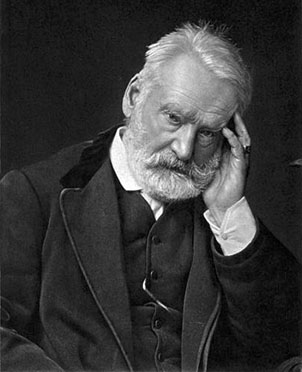
--Victor Marie Hugo
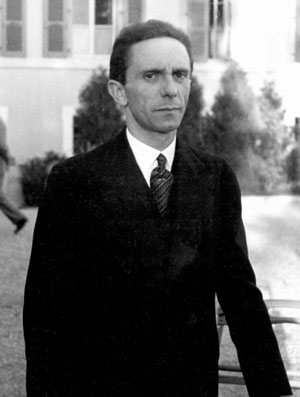
Rather than hoisting the white flag of surrender that the enemy expects, raise the old swastika banner of a fanatic and wild resistance...'
--Joseph Goebbels from the speech Our Hitler, 1945, taken from the Volkischer Beobachter, April 20, 1945
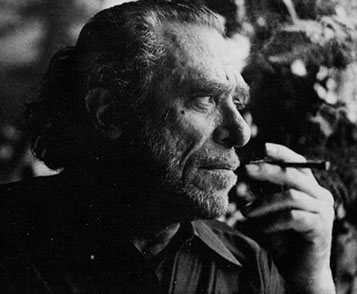
we have
kept
and
as the dogs of the hours
close in
nothing
can be taken
from us
but
our lives.


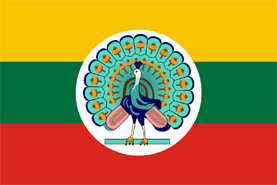

The Emperor of Japan awarded Ba Maw the prestigious Order of the Rising Sun medal in March, 1943.]
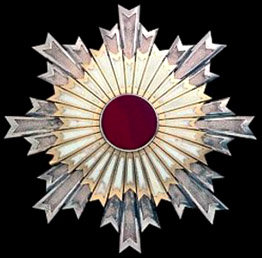
Despite this he wore the Order of the Rising Sun with pride until it was stolen from him during the war.]



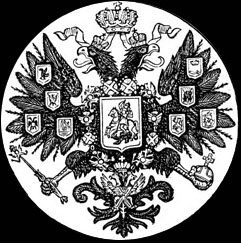

we have a common mother - Russia,
we have a common ally - the German people.
Let the boys remember and prepare themselves to be worthy of the task that will deliver when the time comes...'


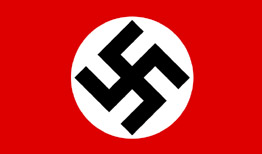


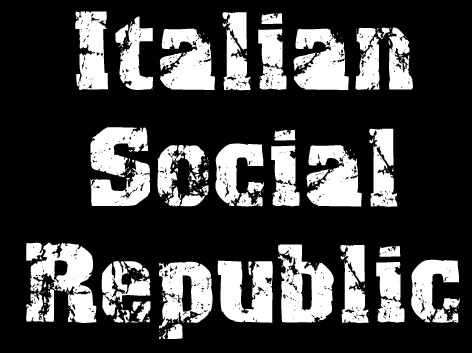
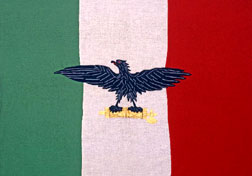
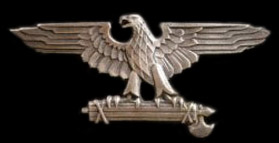






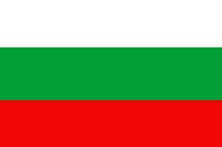

-slogan of the Brannik organization.
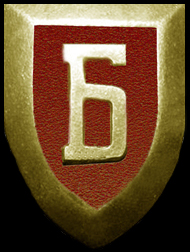
They are pictured in front of the Sans Souci Palace, the former summer palace of Frederick the Great. Sans Souci is French for 'carefree' or 'no worries'.]
'One could say that "Brannik" was the Bulgarian version of Hitler Youth...'.
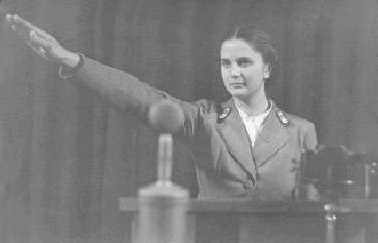
The top two say:
'Bulgaria of warriors [Branniks], Bulgaria of Simeon [great Bulgarian king].
The next two say: 'A deed for Brannik is a deed for Bulgaria.'
And lastly, the bottom label: 'Brannik's labor for Bulgaria.']


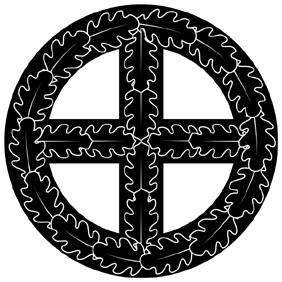




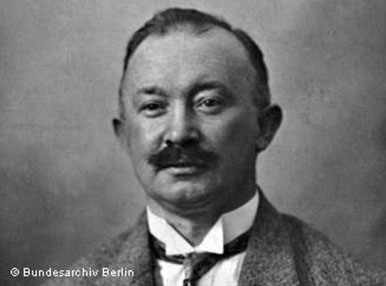
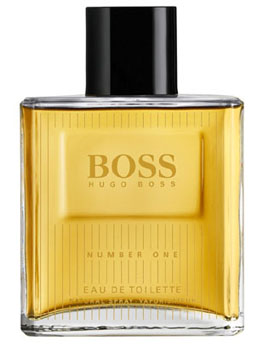
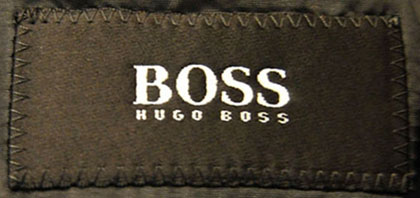




'In the name of Orthodox Christianity the faithful sons of the DON go to battle resolutely against the Jews!'.


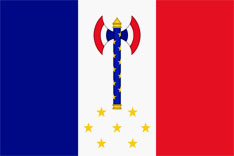
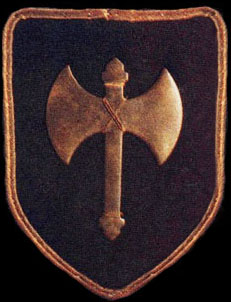

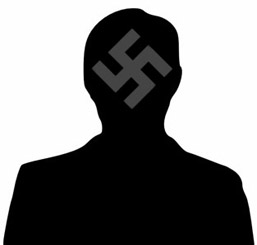



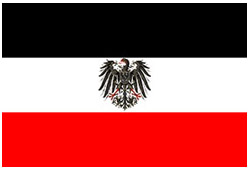

Some time must elapse before education attains the standard it had reached under the Germans.'





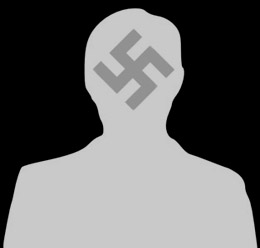



-|-
Third Reich Philatelia
-|-
-|-
Third Reich Ephemera
-|-
-|-
Third Reich Awards
-|-
-|-
Third Reich Miscellanea
-|-
-|-
Third Reich Identification Books
-|-
-|-
Third Reich Currency
-|-
-|-
The Great War
-|-
-|-
Hand of Pandora
-|-
-|-
Waffen-SS Technical Information -|-
-|-
The European Volunteer Movement in WWII -|-
-|-
Copyright -|-